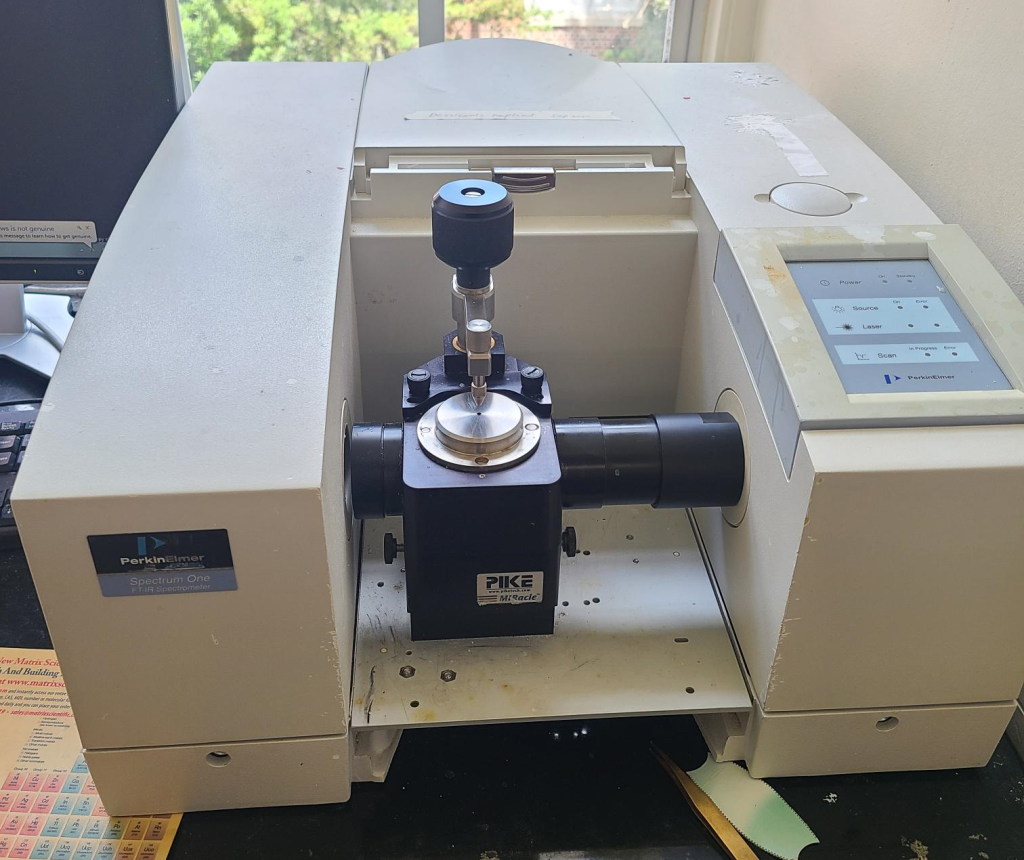
| PerkinElmer | Spectrum 1 |
| Range | 4000 – 600 cm-1 |
| Materials | Organic solutions (FT-IR) Neat solids or liquids, aqueous or organic solutions (ATR) |
| Amounts | ca. 1 mg/mL (FT-IR) ca. 1 – 5 mg / 1 – 3 μL (ATR) |
Infrared (IR) Spectroscopy is used to identify functional groups in organic molecules. It is based on molecular vibrations such as stretching (which changes the bond length) and bending (which changes the bond angle). When the frequency of radiation from the instrument matches one of the vibrational modes of a molecule with a dipole moment, a portion of the infrared radiation is absorbed. The rest passes through the sample (transmitted). The resulting spectrum creates a molecular fingerprint of the molecule. Different functional groups absorb and transmit different amounts of IR radiation based on the magnitude of their dipole moments. As a result, different functional groups produce bands in distinct regions of the IR spectrum and with distinct intensities. This feature allows for the practical detection and characterization of various functional groups.
Interpreting an IR spectrum may be performed by library matching from a spectral database, such as from NIST, or comparing band positions to reference tables. A selection of useful links are provided below: